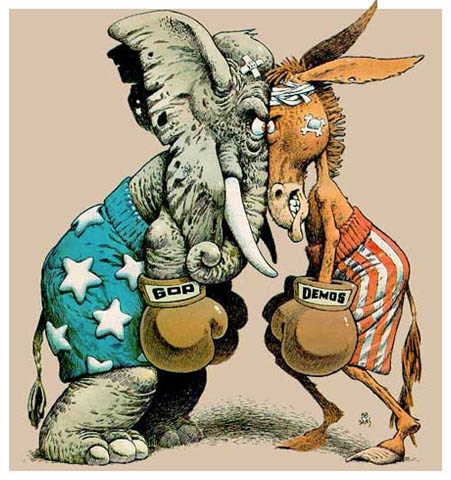Looks like the Governor of Texas Rick Perry was more right about Fed Chair Bernanke then the alphabet networks, cable news, some conservative pundits, and four Congressmen with their tone it down mantra to the Governor.
Fed Chairman Ben S. Bernanke’s unprecedented effort to keep the economy from plunging into depression included lending banks and other companies as much as $1.2 trillion of public money, about the same amount U.S. homeowners currently owe on 6.5 million delinquent and foreclosed mortgages.The American taxpayer didn't know this until now that the Fed Chair had loaned $1.2 Trillion from the Fed not only to US banks but to European banks. Words fail me because what I would like to say about Bernanke is not fit to publish. Why weren't the American people told? What right does the Fed Chair have to loan our tax dollars and keep it a secret.
Now rumors are flying Bernanke is thinking of announcing a QE3 on Friday. We found these comments from ZeroHedge.com, doubting he will do a QE3 but with Bernanke who knows. He is probably calculating if it would help Obams'a campaign -- we already know the dollar is not important to him.
QE3 or not QE3, is the question. Joe Weisenthal of Business Insider thinks more easing is unlikely, due to growing inflation. (The Odds Of Imminent QE3 Are Rapidly Plunging) St. Louis Fed President James Bullard remarked, “I think it is a much tougher call to do more QE this time around than it was last year. The inflation picture is different this year than it was last year and the risk of deflation is much more remote than it was last year.” (Fed’s Bullard Says New 2013 Rate Pledge Not a Signal for More Bond Buying)If the Fed had money to loan, why didn't they use it to cut the deficit or is that too simple of question? Is the money the taxpayers or Obama/Bernanke's? Why are we borrowing money if we had $1.2 Trillion to loan? A lot of questions with zero answers!
Wall Street Aristocracy Got $1.2 Trillion From Fed
By Bradley Keoun and Phil Kuntz - Aug 22, 2011 7:19 AM CT
Citigroup Inc. (C) and Bank of America Corp. (BAC) were the reigning champions of finance in 2006 as home prices peaked, leading the 10 biggest U.S. banks and brokerage firms to their best year ever with $104 billion of profits.
By 2008, the housing market’s collapse forced those companies to take more than six times as much, $669 billion, in emergency loans from the U.S. Federal Reserve. The loans dwarfed the $160 billion in public bailouts the top 10 got from the U.S. Treasury, yet until now the full amounts have remained secret.
Fed Chairman Ben S. Bernanke’s unprecedented effort to keep the economy from plunging into depression included lending banks and other companies as much as $1.2 trillion of public money, about the same amount U.S. homeowners currently owe on 6.5 million delinquent and foreclosed mortgages. The largest borrower, Morgan Stanley (MS), got as much as $107.3 billion, while Citigroup took $99.5 billion and Bank of America $91.4 billion, according to a Bloomberg News compilation of data obtained through Freedom of Information Act requests, months of litigation and an act of Congress.
“These are all whopping numbers,” said Robert Litan, a former Justice Department official who in the 1990s served on a commission probing the causes of the savings and loan crisis. “You’re talking about the aristocracy of American finance going down the tubes without the federal money.”
(View the Bloomberg interactive graphic to chart the Fed’s financial bailout.)
Foreign Borrowers
It wasn’t just American finance. Almost half of the Fed’s top 30 borrowers, measured by peak balances, were European firms. They included Edinburgh-based Royal Bank of Scotland Plc, which took $84.5 billion, the most of any non-U.S. lender, and Zurich-based UBS AG (UBSN), which got $77.2 billion. Germany’s Hypo Real Estate Holding AG borrowed $28.7 billion, an average of $21 million for each of its 1,366 employees.
The largest borrowers also included Dexia SA (DEXB), Belgium’s biggest bank by assets, and Societe Generale SA, based in Paris, whose bond-insurance prices have surged in the past month as investors speculated that the spreading sovereign debt crisis in Europe might increase their chances of default.
The $1.2 trillion peak on Dec. 5, 2008 -- the combined outstanding balance under the seven programs tallied by Bloomberg -- was almost three times the size of the U.S. federal budget deficit that year and more than the total earnings of all federally insured banks in the U.S. for the decade through 2010, according to data compiled by Bloomberg.
Peak Balance
The balance was more than 25 times the Fed’s pre-crisis lending peak of $46 billion on Sept. 12, 2001, the day after terrorists attacked the World Trade Center in New York and the Pentagon. Denominated in $1 bills, the $1.2 trillion would fill 539 Olympic-size swimming pools.
Excerpt: Read More at Bloomberg





No comments:
Post a Comment